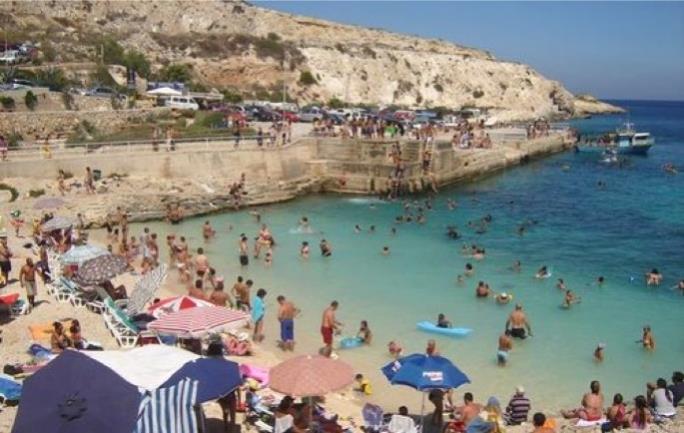The death-knell was rung today on a 14-year-old dream of creating a Costa Amalfitana in Gozo's Hondoq ir-Rummien.
It is the word 'finis' to so many site inspections (in the seaplane times), so many rivers of ink on the papers, and at least two public hearings which turned out to be clashes of masses of people - people from Qala versus people working with the developers.
At the end, the bay has been left exactly as it was 14 years ago - the derelict and rubbish-strewn quarry on the side, the much-popular 'simenta', the narrow and over-crowded road leading down and the even more popular beach. At the end, hope was nevertheless expressed that something is done about the whole area without opening it up to speculation.
Two facts however must be pointed out at the outset.
The Hondoq beach is not a natural bay: it was artificially created when the now-unused desalination plant was built in the 1960s.
The area earmarked for development is privately-owned. A huge chunk of it was owned by the Augustinian fathers who sold it off to a developer some years ago.

Thence came the idea for a massive development which aimed to include the quarry, create a yacht marina and build on the other side of the bay a 110-room hotel and a village with 200 accommodation units.
Coming in the wake of the Hilton development in Malta, this aimed to do for Hondoq what the Hilton did for St Julian's - create a man-made bay and upgrade the entire area.
But the concept soon ran into serious opposition by the Qala residents. At first they were derided as being against progress and happy to keep having barbecues on the beach. Then more serious concerns cropped up - traffic above all, for it was calculated that excavation of the site would require 15 trucks an hour for 18 months.
The applicants tried to come up with solutions but that made things worse - they came up with a road cutting through fields but that in turn created the need for some tight bends that cannot be navigated by trucks.
At the last minute, the applicants insisted that a revised application which they had submitted in 2011, which removed the marina and substituted for it a laguna while the marina would be housed to the side, must be considered before an updated DPAR by the Directorate. In all probability, it would not have worked either.
When they presented the revised application to the former Mepa CEO, Ian Stafrace, he refused to accept it. So the applicants appealed to the Appeals Board which came up with the decision the Mepa Board had to decide. But for a reason that today remained a mystery, the applicants did not apply to the board. The board said it was not informed of the Appeals Board decision.
Then, to cut a long story short, the chairman asked the Planning Board members to decide whether to accept to consider the new application but they unanimously decided to consider the old application and its DPAR.
In arguing on behalf of the applicants, the applicants' lawyer pointed out this is a 14-year old application and that Mepa took four years to write the DPAR but now it expected the applicants just 10 days to come up with their reaction. He threatened to go to Europe with this case and the chairman told him they can go elsewhere with their concerns.
Willy-nilly, and despite seeing the lie of the land, architect Edward Bencini explained the old application. The applicants had already spent Lm1 million on the plans. The laguna concept had reduced the site coverage by 50%. Otherwise, there was no change in site configuration, no addition to floors, no increase in heights, no increase in density, no substantial change in design, no change in vehicular access, no change in alignment.
He claimed that because of the short notice, only two of the many experts consulted at EIS stage could make it to the hearing.
The EIS however came in for some heavy battering. Heavy criticism was expressed on some of its reports especially the social impact study which, possibly seeing that the reactions by the Qala residents were quite negative, inexplicably factored in the reactions by people in Nadur and Ghajnsielem.
Criticism was also expressed about a change in the local plan of the area which took place in 2006 and about which the local council was not consulted. The revised local plan called for tourism development of the quarry and the applicants based their defence of the application on this renewed local plan.
Astrid Vella, from Flimkien ghal Ambjent Ahjar mentioned the non-consultation while MP Ryan Callus defended what the local plan tried to do but did not mention the non-consultation of the local council.
Former mayor Paul Buttigieg mentioned the referendum held under his remit. 75% of Qala residents had voted and 85% of them were against the project.
This, another Paul Buttigieg, deputy mayor and representative on the Planning Board, said, would have created a new village in ODZ.
The negative vote was unanimous and largely foregone.